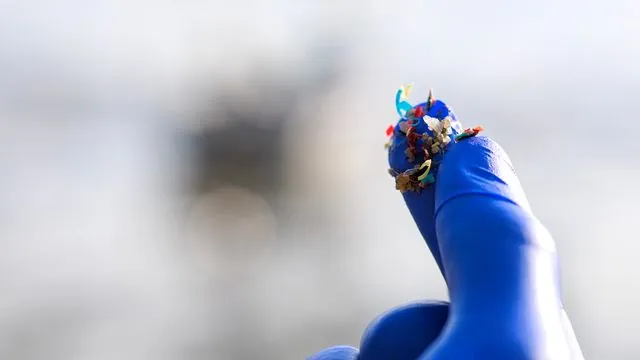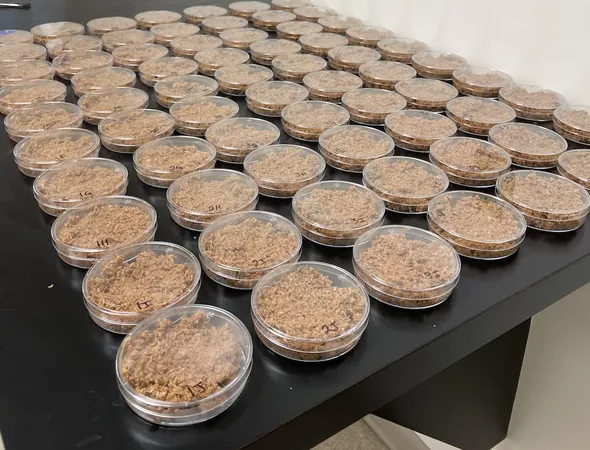
How Arctic Grazers are Secretly Influencing Plant Growth Amid Climate Change
2024-11-13
Author: Jia
The Greening of the Arctic
Recent research from the University of California, Davis has shed light on how these iconic Arctic herbivores directly impact plant life. With climate change accelerating in the region, the investigation into Arctic greening highlights the need to include grazing patterns of animals like the caribou and muskoxen as critical factors in how plants thrive in this harsh environment.
Published in the journal PNAS Nexus, the study reveals new insights into the connections between these herbivores and the timing and abundance of various plant species. While temperature changes have long been the primary focus of researchers, this new understanding emphasizes the importance of the grazing habits of these hoofed residents in shaping the Arctic ecosystem.
Understanding Phenology: The Timing of Life
To grasp the significance of these findings, we must delve into the study of phenology—the timing of natural events, such as plant blooming and animal migrations. As the Arctic warms, tracking these patterns is essential, particularly as caribou and muskoxen greatly influence when plants emerge from their winter slumber.
Lead author Eric Post, an expert in arctic ecology, states, “Caribou and muskoxen play a key role in how soon plants emerge and this translates to how abundant they become. This important factor in our understanding of climate change impact on tundra vegetation must not be overlooked.”
Insights from Long-Term Research
The research spanned over 22 years near Kangerlussuaq, Greenland, where Post and his team conducted exclusion experiments to determine the impact of herbivores on plant growth. By analyzing the growth patterns of nine different plant species in the presence and absence of grazing animals from 2009 to 2017, significant differences emerged.
Findings indicated that areas with grazing caribou or muskoxen saw an earlier greening of plants and a sustained abundance throughout the growing season compared to areas devoid of these grazers. Strikingly, about two-thirds of the plants responded positively, but certain species like dwarf birch and harebell showed delayed emergence when grazed.
The Ripple Effect of Herbivory on Plant Growth
While the reasons behind these differing responses remain unclear, the study unveils a new perspective on ecological interactions. Post explains, “Traditionally, we consider how the timing of plant availability affects grazers, but we must recognize that their presence also influences when and how plants grow.”
This connection becomes increasingly relevant, particularly as various caribou populations face decline. The International Union for Conservation of Nature (IUCN) has classified migratory tundra caribou as vulnerable, with populations declining over 50% since the 1990s.
Nature-Based Solutions in a Changing Climate
In light of these revelations, Post proposes an intriguing approach: maintaining healthy populations of herbivores could provide a more effective nature-based strategy against climate change than simply planting trees in the Arctic. These findings underline the necessity for comprehensive conservation efforts that support herbivore populations and their role in promoting plant growth.
As our understanding of this delicate ecosystem deepens, it becomes crucial to advocate for protective measures that address both climate change and the preservation of the Arctic’s unique biodiversity.
The research published in PNAS Nexus marks a step forward in unraveling these complex interactions, but with an ever-evolving environment, it is clear that ongoing studies are vital. The journey toward safeguarding the Arctic’s ecological balance amidst climate change continues, one revelation at a time.





 Brasil (PT)
Brasil (PT)
 Canada (EN)
Canada (EN)
 Chile (ES)
Chile (ES)
 España (ES)
España (ES)
 France (FR)
France (FR)
 Hong Kong (EN)
Hong Kong (EN)
 Italia (IT)
Italia (IT)
 日本 (JA)
日本 (JA)
 Magyarország (HU)
Magyarország (HU)
 Norge (NO)
Norge (NO)
 Polska (PL)
Polska (PL)
 Schweiz (DE)
Schweiz (DE)
 Singapore (EN)
Singapore (EN)
 Sverige (SV)
Sverige (SV)
 Suomi (FI)
Suomi (FI)
 Türkiye (TR)
Türkiye (TR)